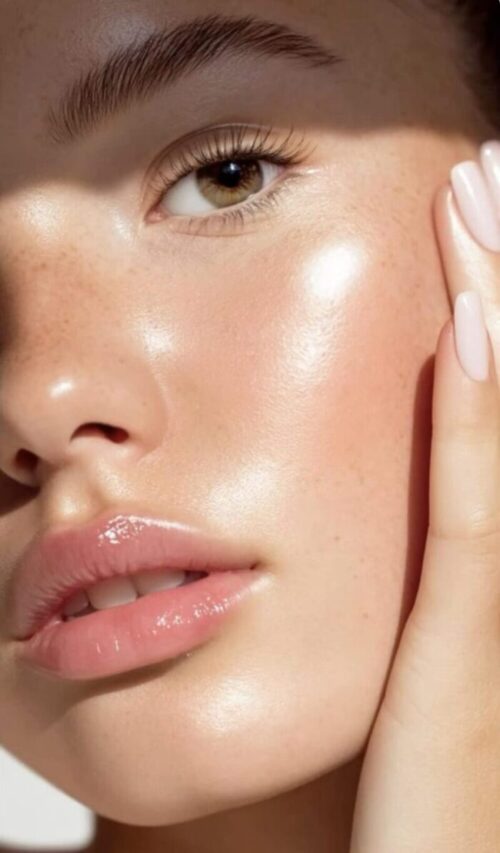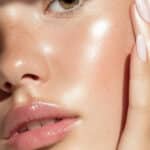
5 Easy Skincare Hacks You Can Do at Home for Glowing Skin
Taking care of your skin doesn’t always require expensive products or complicated routines. Over my 18 years as an esthetician, I’ve seen how small, consistent habits can transform the skin just as much as professional treatments. While there’s no replacement for personalized care from a dermatologist or licensed esthetician, there are plenty of simple things you can do at home to keep your skin looking radiant.
Today, I’m sharing five of my favorite skincare hacks. These are easy, affordable, and most importantly, effective. They’re not about following the latest beauty fad; they’re grounded in practices that genuinely support healthy skin.
Before we begin, one important note: these are general tips meant to support your skin wellness. If you have a specific skin condition or concern, it’s always best to check with your dermatologist or primary care provider.
Let’s dive into five easy skincare hacks you can start tonight for healthier, glowing skin.
1. Sleep on a Silk Pillowcase
You spend about one-third of your life sleeping, and that time has a bigger impact on your skin than you may realize. The type of pillowcase you use can either help your skin thrive or contribute to irritation and wrinkles over time.
Why Silk Makes a Difference
-
Less Friction: Cotton and polyester pillowcases can tug at your skin as you shift at night. Over time, this friction contributes to sleep wrinkles and irritation. Silk, on the other hand, is smooth and reduces drag against your skin.
-
Moisture Retention: Cotton fibers absorb moisture—including your skin’s natural oils and any night creams you’ve applied. Silk helps your skin hold onto hydration.
-
Cooler Sleep: Silk naturally regulates temperature, which can reduce night sweats and keep your skin calmer overnight.
Bonus Benefit: Better Hair Days
Silk pillowcases don’t just help your skin; they also reduce frizz and breakage for your hair.
Light Caution
Switching to silk won’t erase wrinkles, but it can help prevent premature ones. If you’re dealing with persistent dryness or irritation, that may signal an underlying issue, and you should consult your dermatologist.
2. Use Ice to De-Puff Your Face
One of the quickest ways to wake up your skin in the morning is with a little cold therapy.
How It Works
Cold constricts blood vessels, which helps reduce swelling and puffiness. It also stimulates circulation, giving your skin a fresh, rosy glow.
Easy Methods
-
Wrap a few ice cubes in a clean, soft cloth and gently press over your face for a few seconds at a time.
-
Use a chilled jade or rose quartz roller to massage the skin in upward motions.
-
Chill spoons in the freezer overnight and place them over your under-eye area to calm puffiness.
-
Fill a bowl with water, add ice and submerge for 15-20 seconds at a time. [learn more here]
- If ice is a little too much, try splashing cold water from the faucet on your face.
Best Times to Use Ice
-
In the morning to reduce overnight swelling.
-
Before applying makeup to tighten pores and smooth the skin’s surface.
Light Caution
-
Never apply ice directly to bare skin – you can risk irritation or even mild frostbite.
-
If you have rosacea, broken capillaries, or highly sensitive skin, ice treatments may not be the best option. Always test gently first or ask your dermatologist.
3. Layer Your Skincare Products Correctly
The way you apply your skincare matters just as much as the products themselves. If you’ve ever wondered why a serum doesn’t seem to work, it may be because of the order in which you’re layering it.
The Golden Rule: Thinnest to Thickest
This ensures that each product can penetrate properly and do its job.
-
Step 1: Cleanser (start with a clean slate)
-
Step 2: Toner or essence (light, watery formulas)
-
Step 3: Serum (active ingredients like vitamin C, hyaluronic acid)
-
Step 4: Moisturizer (locks everything in)
-
Step 5: SPF (morning only—never skip sunscreen!)
Evening Routine Example
Cleanser → Toner → Treatment serum (like retinol if approved by your dermatologist) → Moisturizer → Overnight mask or facial oil (optional).
Why It Matters
If you apply thick creams first, they block lighter serums from absorbing. Following the right order maximizes effectiveness.
Light Caution
-
Not all actives play well together. For example, avoid layering strong acids with retinol unless instructed by a professional.
-
If you’re new to serums or retinol, start slowly to avoid irritation.
4. Try a DIY Green Tea Toner
Sometimes the best skincare ingredients are already in your kitchen. Green tea is a perfect example—it’s rich in antioxidants, anti-inflammatory compounds, and gentle enough for most skin types.
Benefits of Green Tea for Skin
-
Soothes irritation thanks to its anti-inflammatory properties.
-
Fights free radicals with antioxidants, helping protect against environmental stressors.
-
Balances oil production, making it great for combination or oily skin.
DIY Recipe
-
Brew one cup of green tea and let it cool completely.
-
Pour into a clean glass container.
-
Soak a cotton pad and swipe gently across your face after cleansing.
-
Store in the fridge and use within 2–3 days.
How to Use
-
Morning: Refresh your skin before applying serum and moisturizer.
-
Evening: Calm redness and prep skin for nighttime products.
Light Caution
-
Always patch test on a small area first, especially if you have sensitive skin.
-
Discard after a few days to prevent bacterial growth—this DIY recipe has no preservatives.
5. Store Skincare in the Fridge
This one may sound unusual, but it’s one of my favorite tricks for keeping products fresh and soothing.
Benefits of Cooling Skincare
-
Calms redness: Cold products reduce inflammation, especially for irritated skin.
-
Depuffs eyes: Chilled eye creams and masks can instantly reduce puffiness.
-
Extends shelf life: Certain water-based products last longer when kept cool.
What to Store in the Fridge
-
Moisturizers, serums, and toners.
-
Sheet masks.
-
Eye creams and gels.
What Not to Refrigerate
-
Oil-based products (they can solidify).
-
Retinol or vitamin C serums (these may destabilize with fluctuating temps).
-
Sunscreen (it’s formulated to be stable at room temperature).
Light Caution
Always check the product label. If it says “store at room temperature,” follow that guidance.
Final Thoughts
Glowing skin doesn’t always come from the latest product launch or a pricey spa treatment—it often starts with consistent, everyday habits. From sleeping on a silk pillowcase to trying a refreshing green tea toner, these hacks are simple, affordable, and accessible to everyone.
Remember: skincare is personal. What works for one person may not work for another. Always patch test new routines and check in with your dermatologist or primary care provider if you have ongoing concerns.
With a few mindful habits and consistency, you’ll be amazed at the difference you see in your skin over time.
Frequently Asked Questions (FAQ)
What is the simplest skincare routine I can do at home?
At minimum: cleanse, moisturize, and apply sunscreen in the morning. Everything else is optional, but those three steps are essential.
Do DIY skincare hacks really work?
Some do! Ingredients like green tea, honey, and oatmeal have proven benefits. But not every hack on the internet is safe. Always use caution and avoid harsh ingredients like lemon juice or baking soda directly on your face.
Is it safe to make my own skincare products?
It can be, if you’re using gentle, natural ingredients and proper hygiene. Just remember that DIY products don’t have preservatives, so they should be made in small batches and stored properly.
Which skincare products should I never refrigerate?
Avoid refrigerating oils, retinol, vitamin C serums, and sunscreen. These products are formulated to be stable at room temperature.
Can sleeping on a silk pillowcase really prevent wrinkles?
It won’t erase wrinkles, but it can help reduce sleep lines and minimize skin tugging over time. Think of it as a preventive habit that supports your other skincare efforts


